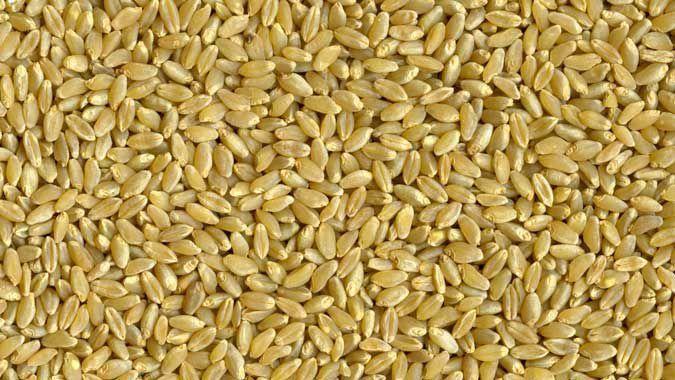Agupdate
By Mark Conlon
Lee Agri-Media
As durum harvest in the Northern Plains begins, the market continues in its current holding pattern.
“With durum we continue to be in a holding pattern with prices in the mid-to-upper $4 range with an average price of $4.60,”said Jim Peterson, marketing director with the North Dakota Wheat Commission.
“In terms of what is going to drive the market, it will ultimately be what kind of yield and quality profile we get out of this year’s crop,” he continued. “The market, from a buyer’s standpoint, is pretty comfortable. We’ve had a lot of carryover inventory and there’s not much in terms of acute export demand that’s waiting to be filled. But, with that said, I think there are some factors that could have a notable impact on prices.”
One of those factors is that there are starting to be some disease concerns in part of the Canadian crop, as well as the northern U.S. durum crop. If those pressures turn out to be more than expected, Peterson pointed out that will tighten the supplies of milling quality durum a little bit.
Another factor is what harvest weather the region is going to get over the next month. If the region continues with a rainy, cool pattern like we’ve had in early August, there will be concern about vitreous kernels and color which can really impact prices.
“From a supply standpoint, right now based on USDA’s projections, buyers have one other less thing to worry about,” he said.
USDA is projecting a record yield in North Dakota of 42 bushels per acre. That beats the previous record of 40.5 bushels per acre set in 2016. Ironically, in Montana, their yield is notably lower at 33 bushels per acre (BPA), which is up slightly from 30 BPA a year ago, but down from 39 BPA that was projected in July. So Montana’s crop went backward from July to August while North Dakota’s crop saw improvement from the 38 BPA projected in July.
“We’ll see if the yields hold true through harvest,” he said. “Certainly the crops in the northwest part of the state have recovered from early drought concerns in June, but it’s somewhat suspect whether it has improved enough to a record yield in one month’s time. Nonetheless, that’s what the market is expecting. We see a pretty flat price pattern.”
U.S. durum harvest in the Northern Plains is getting off to a good start. In North Dakota, harvest was 7 percent complete as of mid-August, while Montana was 13 percent complete. Both states are typically closer to 30-35 percent complete at this time, so both are running behind normal.
Looking at recent adjustments to USDA’s supply and demand projections, in August USDA raised durum exports for the year from 20 million to 25 million bushels, which would put the pace ahead of a year ago. USDA also lowered overall U.S. production by 1 million bushels, going from 58 million bushels to 57 million bushels in production.
“That’s not a significant number, but nonetheless, the higher export projection did lower potential ending stocks by 6 million bushels,” he said.
Current export sales as of mid-August stand at 16 million bushels sold compared to 7 million at this time a year ago. That’s a very strong start out of the gates for U.S. durum and better than expected, according to Peterson.
“I think part of that is some higher demand from Italy. Europe had a decent durum crop, but I think there was some quality concerns in parts of Italy,” he said. “Also Algeria, which had a very large domestic crop, always seems to need to import durum for quality. Morocco had a big drought this year, so their production was down substantially and they are going to need to import higher levels, it’s just a question of from whom.
Peterson noted that Canada tends to be more successful in sales to Morocco, but that’s not necessarily a given that they will get the business.
“Currently there is a tender by Morocco for durum in the near term. The U.S. does have a trade agreement with Morocco, which gives us an advantage, so hopefully we can be successful and capture some of that business,” Peterson said.
“Going forward into the next month price direction is going to be solely driven by the pace and outcome of the harvest, what the yield and the quality will be. So buyers will be watching as will producers to see if we’re going to have any issues from a quality standpoint and if the crop is a record yielding one as USDA is currently projecting,” he concluded.







